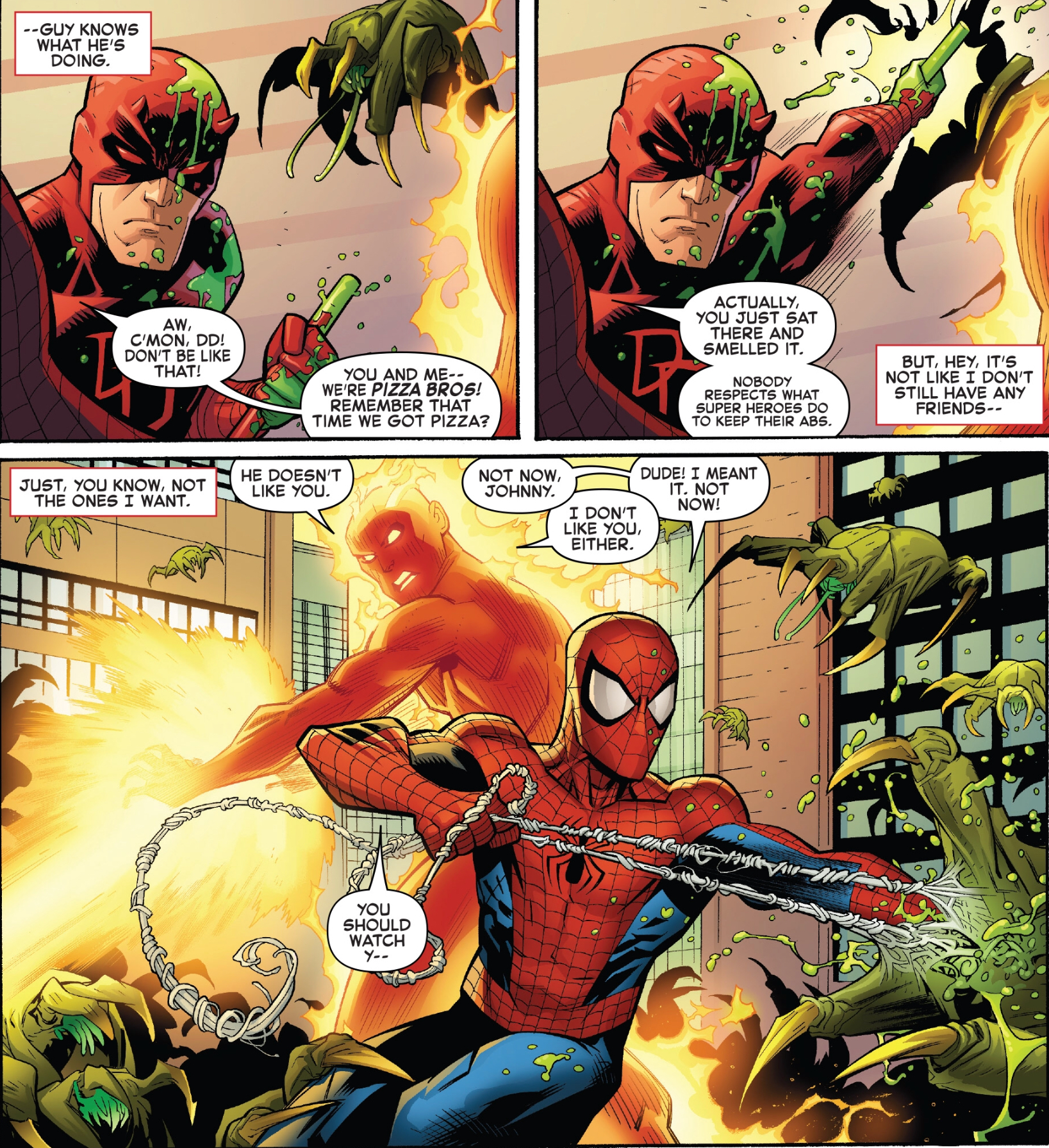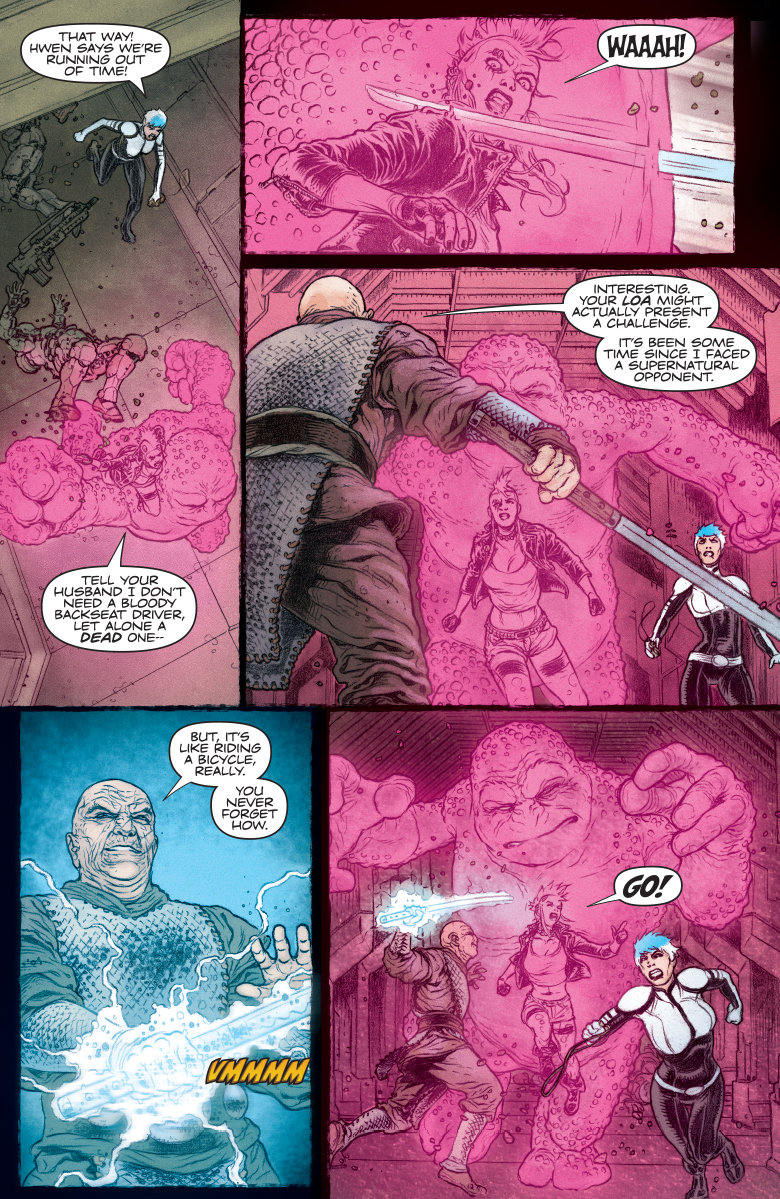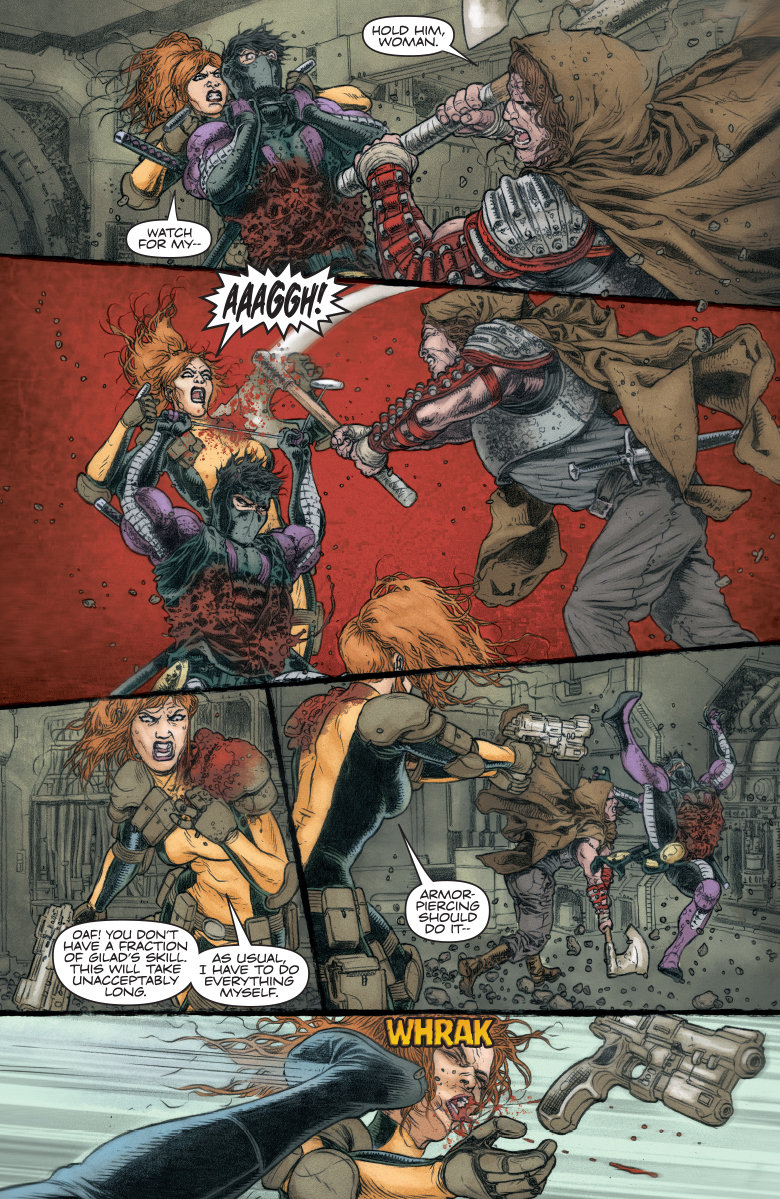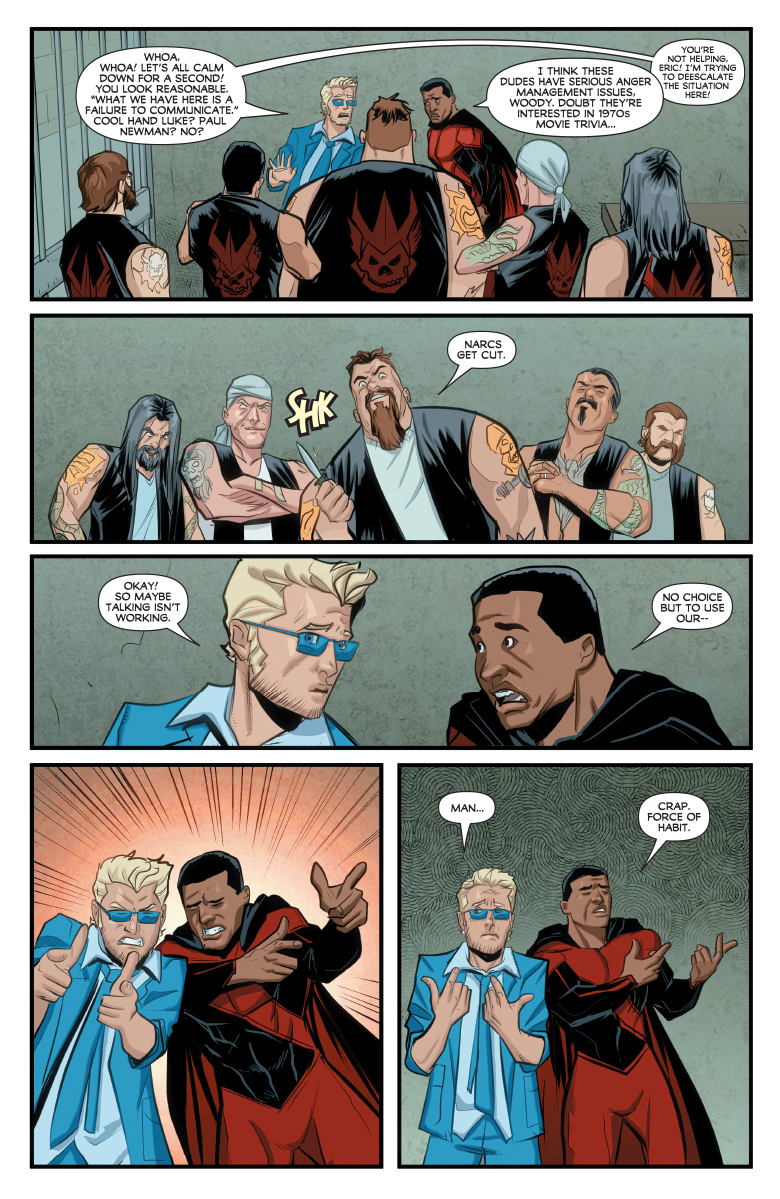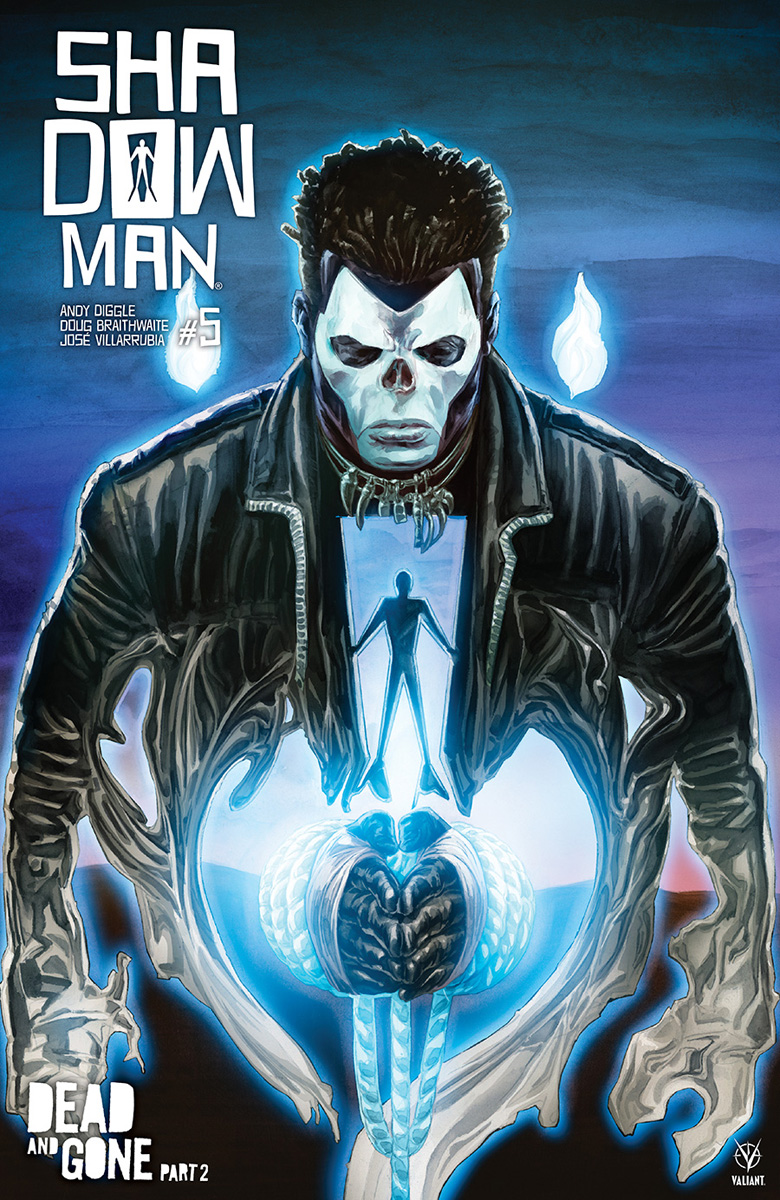REVIEW: The Unexpected #3 by Steve Orlando, Cary Nord, Mark Farmer, Scott Hanna, Jeromy Cox, & Carlos M. Mangual
In its third issue, some of the cost of the deaths in The Unexpected's earlier issues becomes clear.
By Zack Quaintance — If you read The Unexpected #1, you know the book feigned as if it were a story of a new hero (Firebrand) joining some kind of oddball super-crew (Neon and team). But then—spoilers—the book swerved, killing two of Firebrand’s would-be teammates plus also its presumed big bad. In The Unexpected #3, the price for some of that death has now come due.
With its first two issues, The Unexpected established itself as a rock-solid new concept in the DCU, one driven by a pair of compelling leads and their nascent dynamic. Introductions, however, have now ended and it’s time for the plot to push forward as its mysteries and ramifications rapidly expand.
Consequences is a major theme in The Unexpected, and not just consequences for characters but consequences for the world following the recent event story, Dark Nights Metal. Scott Snyder and team’s Justice League is currently exploring all that on a marco/galactic level, specifically the broken source wall. This book, meanwhile, is taking a more nuanced approach, extrapolating upon some of the other effects of Nth Metal (and the mystery of the Nth Metal Isotope at the heart of it all...sorry) as well as the existence of the Dark Multiverse. I don’t want to give anything away, but this issue also fully unveils The Unexpected’s actual big bad (who has appeared briefly in past issues and also in Metal...but I’ll say no more).
At the same time, Orlando, Nord, and team are building new ideas into the DCU with this book. In this issue it is revealed that orcks once ruled the Earth and lived in floating cities powered by Nth Metal (known to them as Uk Metal). This is used to flesh out one of the deceased character's importance, as well as to illustrate the cost of his death, but now that it’s been put on the DC board, it’ll obviously always be there moving forward. Building onto mythos is something Orlando seems bent on doing in all his work, and, in fact, a creation from his Justice League of America—Monster Valley—shows up again here.
Simply put, this is all a very cool approach to superhero storytelling, one that for detail-oriented readers (myself included) is quite rewarding. That aside, this book is also telling an action-heavy story that any reader could just pick up and enjoy (I’d reckon). Living in both of those worlds is most certainly to The Unexpected’s credit. This is easily one of the least predictable and awesomely surprising books at DC Comics right now, and I, for one, can't wait to see where it's all headed.
Overall: The Unexpected continues to be heavy on both action and detail, creating a book with as much to offer casual readers as it does obsessive superhero fans. The Unexpected #3 delves even deeper into Dark Night Metal’s fallout, a nice reward for DC devotees. 9.0/10
For more comic book and movie reviews, check out our review archives here.
Zack Quaintance is a journalist who also writes fiction and makes comics. Find him on Twitter at @zackquaintance. He lives in Sacramento, California.





























